Gallery
1. Capable of sweeps on Polyhedral meshes
Sphere embedded within a box:
Concave cells induce cyclic dependencies between cells.
Non-cutting volumetric partitioning induces cyclic dependencies between processors.
Data structures allow sweeping with all forms of cycles.
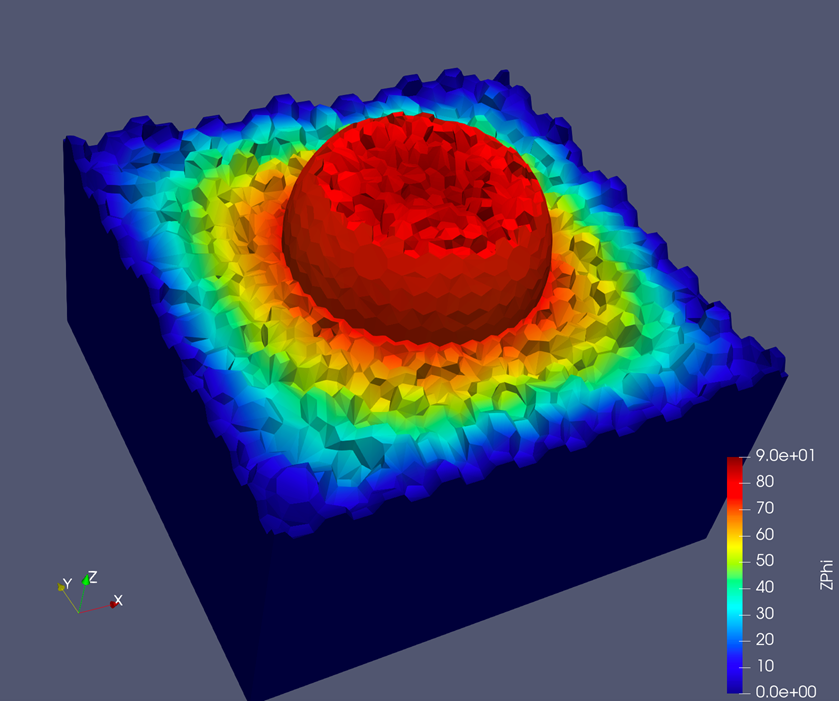
3-D polyhedral mesh generated with STAR-CCM+.

Slice of the solution.
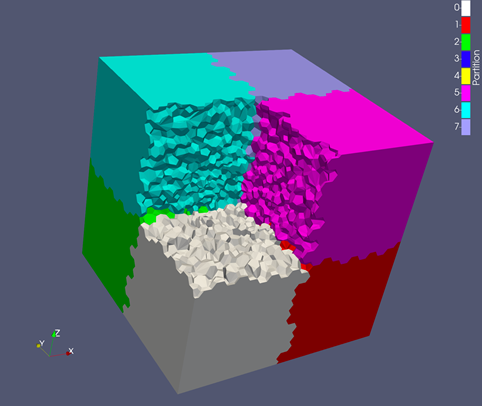
Arbitrary, non-cutting, KBA-style partitioning used.
2. C5G7 Criticality Benchmark with 768 processors
Very old results (circa 2020) for the reactor benchmark C5G7.
These results did not use acceleration techniques (to be updated in Spring 2024)
7 energy groups
200 directions
454 491 cells
Ran on 768 processors
Took only 18 minutes to complete (less than 2 min today)
Used 584 GB of memory
k_effwithin 100 pcm (much less today)
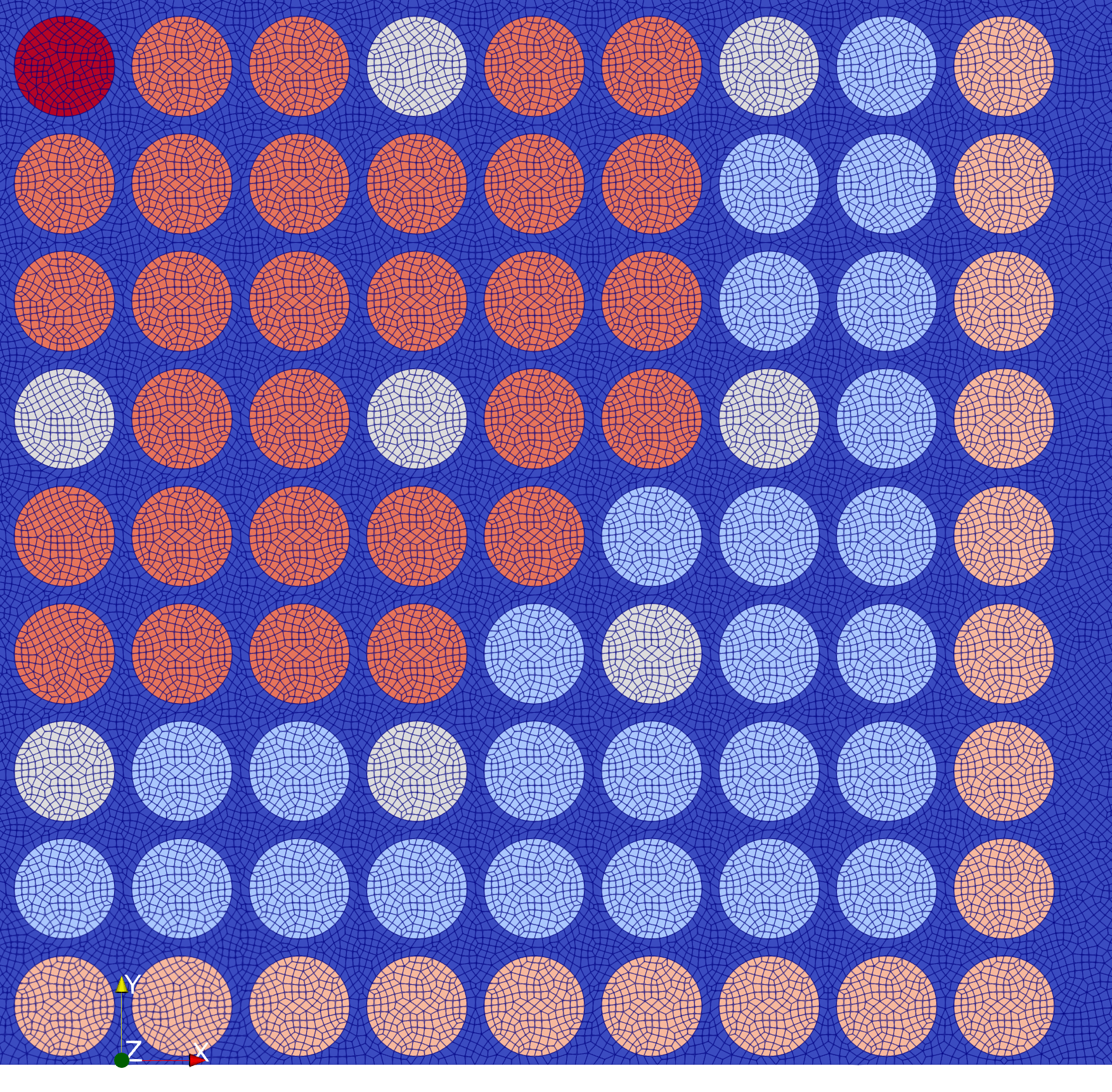
Close-up view of the mesh used (colors represent materials).

Energy group 0 solution.
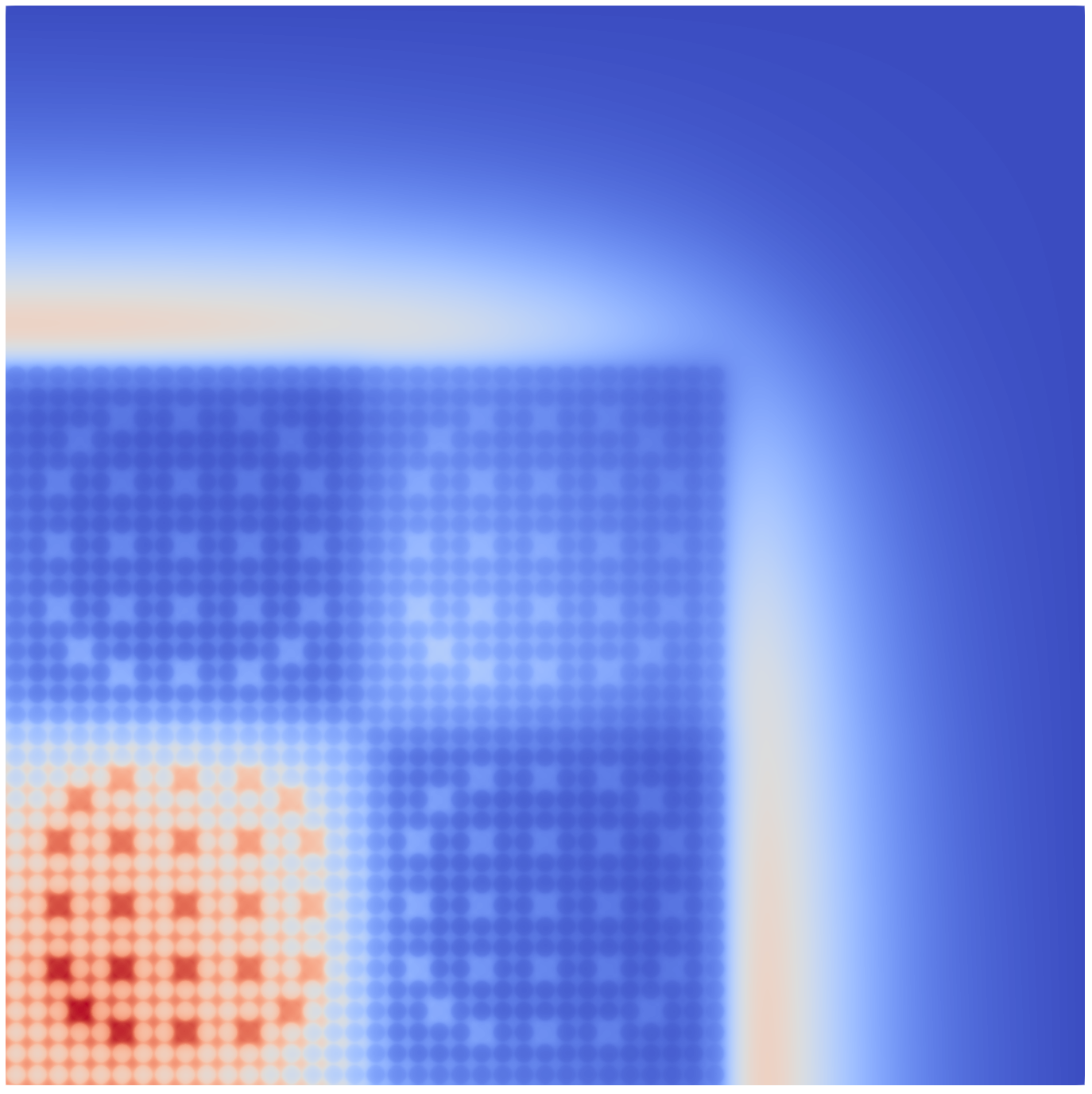
Energy group 6 solution.

ParMETIS partitioning of the mesh (768 processors).
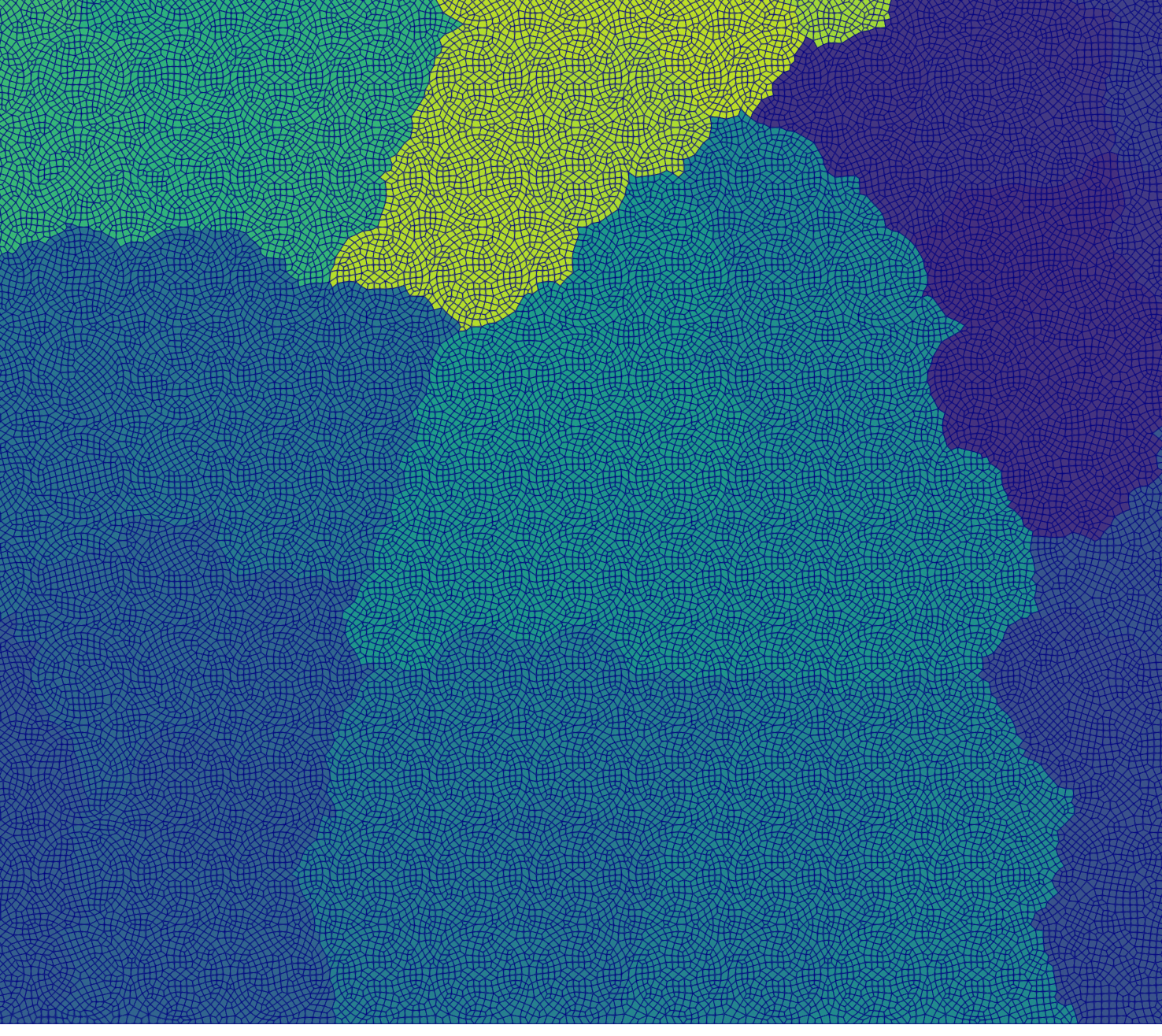
Close-up of the ParMETIS partitioning with the mesh visible.
3. Real world simulations
The Center for Exascale Radiation Transport (CERT) simulated—and compared to experiment—a graphite pile with a high-energy neutron source. This simulation used:
~172 energy groups
Over 3000 directions
~500 k cells
Over 100 k processors for some simulations
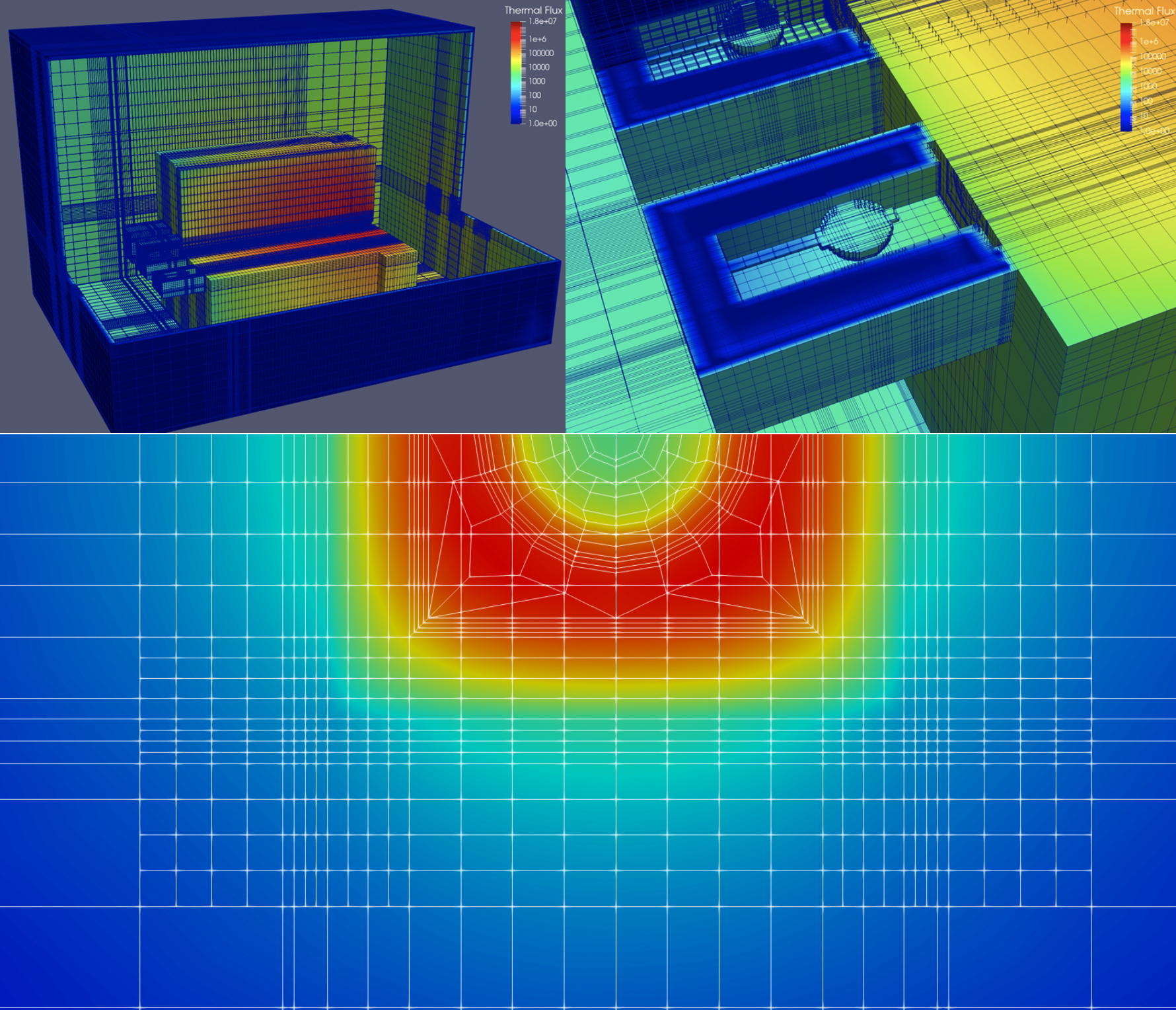
CERT simulation versus experiment.